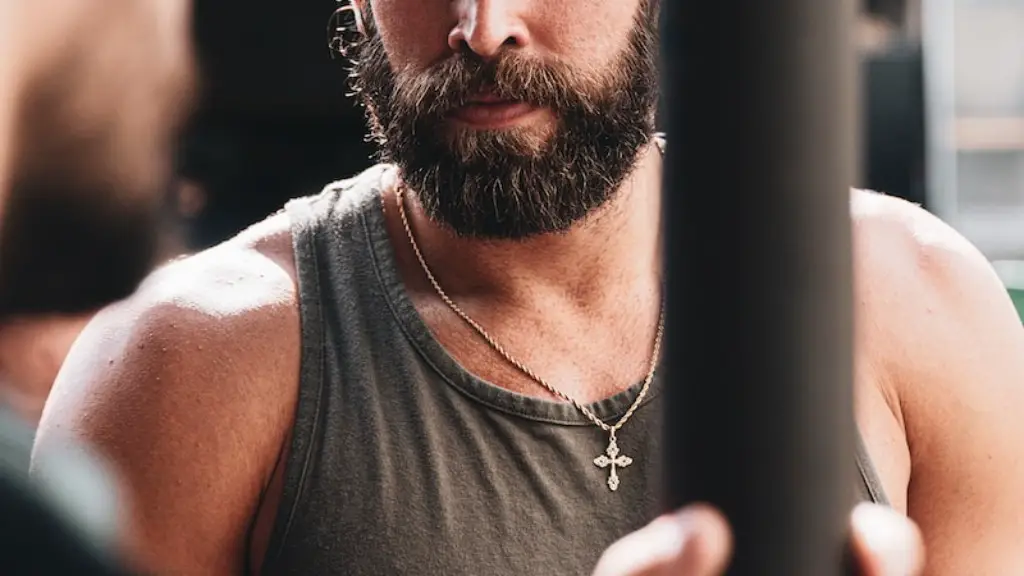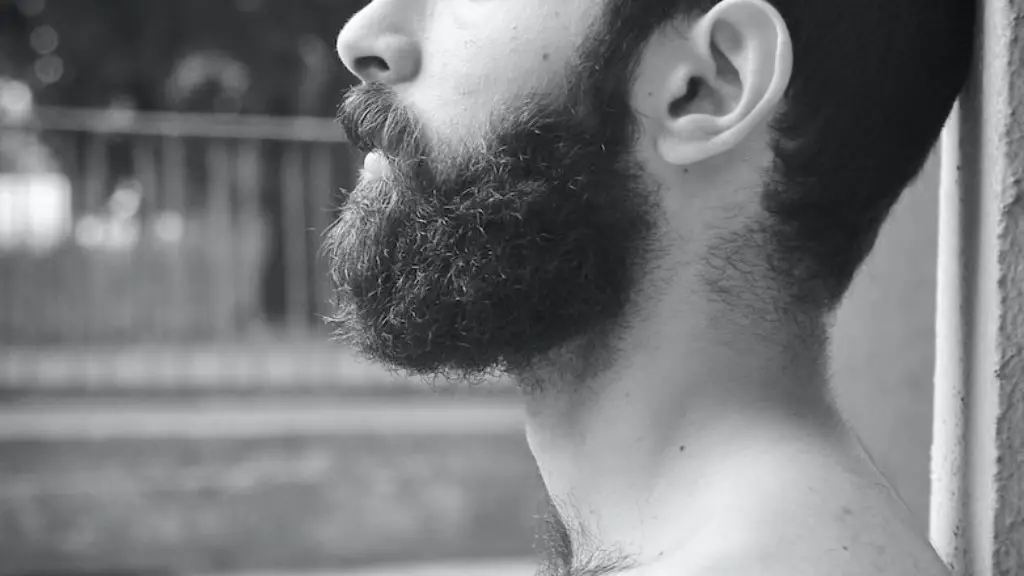Grow Out The Patchiness
As a man, one of the most important social parts of grooming is taking care of your facial hair. A patchy beard can be a source of embarrassment and insecurity, but there are ways to even out the patchiness and achieve the facial hair you desire. Growing out patchiness can be a long process, but one that is worth completing.
Before attempting to even out your patchiness, it is important to understand what may have caused it in the first place. Genetics, age, and strain on facial hair are common causes of patchiness. Genetics is often seen as the main cause, as stress and age take more time to begin to show their effects. If patchiness is due to genetics, then unfortunately it is unlikely that anything can be done about it. However, actions can be taken to even out the patches.
The best method for evening out patchy beards is to grow the beard out for 3-4 months, using a trimmer on the sides and lower parts of the beard to ensure that it is even. Trimming the beard in this way across the entire beard will allow the patchiest of spots to fill in during the growth process. If trimming too close, then try a guard 2-3 levels above what is typically used to ensure that the hair is long enough to fill out the patchiness.
Combing the beard regularly might seem like common advice, but it can help to even out patchiness. The reason for this is that when combing, the patches will lay flat against your face, allowing all of the hair to be seen. The result is that it can make the patches look less severe and the beard more even.
Another thing to consider is paying attention to the parts of the beard that grow back first or thicker. These areas can be shaved and groomed in a way that helps to fill in the patchiest parts. Making sure to not trim too aggressively will help ensure that shaving does not cause further patchiness.
Regular Cleaning And Moisturizing Go A Long Way
Apart from the more stylistic aspects of a beard, a more necessary thing to consider is the actual upkeep of it. Given the importance of keeping skin beneath the hair clean and moisturized, cleaning and moisturizing a beard regularly is important. A clean, healthy beard is much easier to groom and style, and can help to reduce patchiness.
Using products such as beard oils, balms and waxes can help to keep the facial hair moisturized and healthy. Even just washing the beard with shampoo and conditioner once a week is often enough to make a noticeable difference in the overall health of a beard.
Beard combs and brushes can help to keep a beard groomed, but they are essential in training the beard to grow in the same direction and can help to fill in any patchiness. Keeping a beard combed through twice a day will keep it looking good but also train the facial hair to grow where you want it.
Know When You Need Help
When all else fails, seeking the help of a professional or consultant may be the best solution. They can give advice on many different aspects of facial hair, including styling, grooming, and shaping. They may also be able to make recommendations and provide tips on how to fill in the patchiness and make the beard look as even and full as possible.
It may take patience and dedication to get the beard even, but it can be done with the right tools, products and advice. Don’t rush the process, but trust in your own natural growth cycle. Allow for the patches to fill in over time, and don’t be afraid to stylistically help them out a bit.
Different Styles For Different Shapes
Just because a patchy beard is present, it does not mean that all hope is lost. There are certain facial hairstyles that can actually work to break up any patchy areas of the face, and make them less noticeable. One such style is the chin curtain, where the beard covers more of the face and neck, evening out the face. Another option is the circle beard, which gives the face a more symmetrical shape. For a square-shaped face, a ‘goatee’ style could help to even out patchiness.
While the beard may not be filled in completely, the idea is to keep the facial hair as clean and even as possible, so that the patchiness is not as visible. The goal should not be to hide patchiness, but to emphasize the areas that are un-patched.
Trim And Even Out The Patches
With patchiness there can sometimes be a lack of volume in the beard. To make the beard appear more full and even, it is important to trim it in a way that makes the patches less visible. A barber will be able to guide a person in the best way to go about trimming their beard. Using clippers, trim down the patches so that the length is the same across the entire beard. This will create an even look and make the patches less visible.
The shape of the beard also affects how patchy it appears. Focusing on making sure the beard is an even shape and cut can also help to reduce the appearance of patchiness. Start by using a trimmer to make sure all of the hairs are the same length, and then use a comb and clippers to shape the beard. Keeping the difference between the depth of the cut to a minimum will help create an even shape and reduce patchiness.
Product Recommendations To Help With Patchiness
Beard conditioners, oils, and shampoos are all products that can help to reduce the appearance of patchiness and promote healthier beard growth. Natural products such as jojoba or argan oil can be beneficial in moisturizing the skin underneath the beard. This helps to make the beard softer, easier to style and groom, which in turn reduces the appearance of patchiness.
Using a natural beard oil after washing helps to tamed the beard and keep it looking neat. This can be done by dispersing the oil evenly in your hands and running them through your facial hair. Using essential oils, such as rosemary, can also help promote the health of facial hair as rosemary helps to activate the circulation of blood. This can encourage thicker and more even-looking facial hair.
Other Tips For Patchy Beard Care
Aside from the tips mentioned above, there are a couple of additional tips that may help to reduce the visibility of patchiness. Firstly, it is important to wash the beard regularly in order to remove dirt and bacteria. Washing with a gentle cleanser will help to keep the facial hair healthy and clean.
It might also be worth trying different beard styles in order to reduce patchiness. A shorter beard will make the patches less visible, as it will mask any rough or patchy spots. Longer beards are more likely to show patchiness.
Finally, eating a healthy balanced diet and taking vitamin supplements may help to nourish the beard. Eating well with plenty of protein, omega 3 fatty acids, and vitamins A, B and E will help to promote hair growth.

